13th of August 2016
The weather was hot & sunny, and, like many times before & since that hot summer day in 2016, I spent the afternoon outdoors, in the coastal meadows a couple of kilometers from the village of Liznjan.
In today's post, I'm about to show you some insects and plants I photographed there using a small (and pretty bad) compact camera.
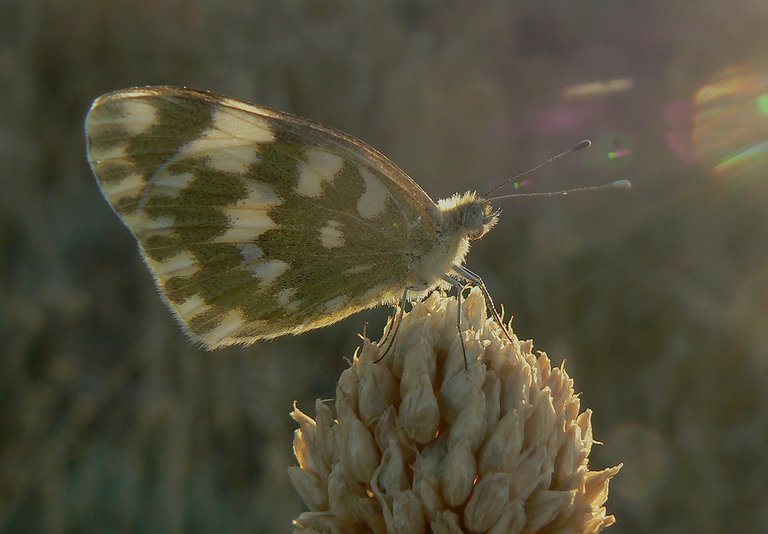
Here you can see a butterfly from the Pieridae family. Pontia edusa is the name of the species. In the following photograph ...

... you can see a bunch of dry plants that have produced a multitude of fluffy seeds.

I wasn't able to identify the species.
This is the common green lacewing (Chrysoperla carnea)
Here you can see the eggs laid by the female green lacewing.
They are attached to the vegetation through slender stalks that can keep each larva at a safe distance from the others. The predatory larvae are prone to cannibalism when they hatch.

Here you can see a mantis that was posing on my hand.
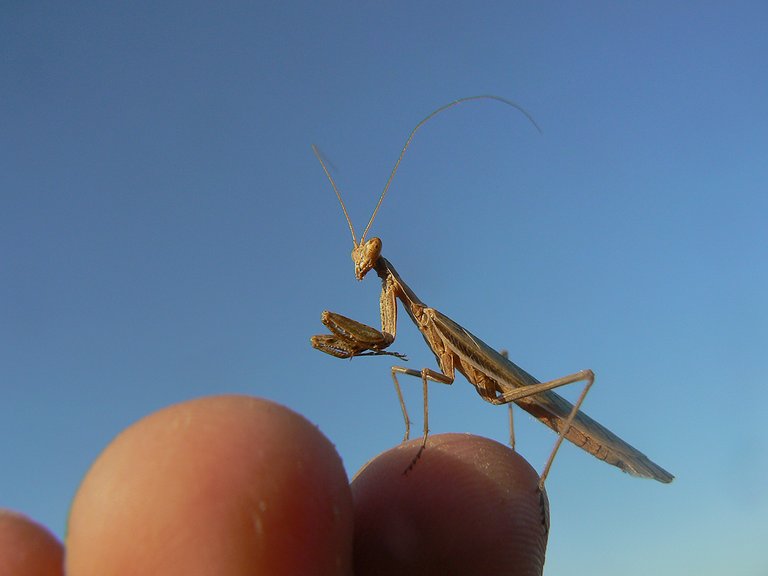
This is the male of the European mantis (Mantis religiosa).
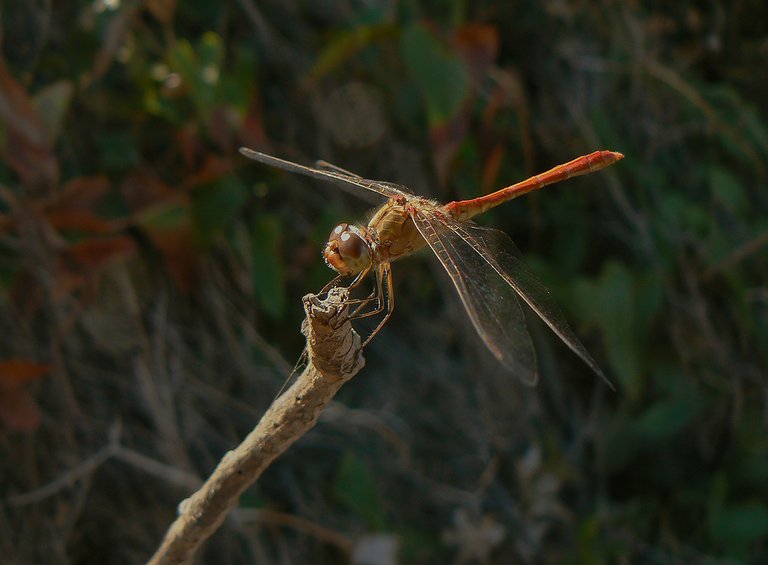
I spent some time observing a dragonfly that was flying around and always returning to rest on the same twig by the side of the dusty road surrounded by the dense growth of various shrubs.
At one point the predatory insect returned with a prey. The dragonfly has caught a fly.
In this set of four photographs, you can observe the Sympetrum vulgatum, a dragonfly from the Libellulidae family, having a snack.
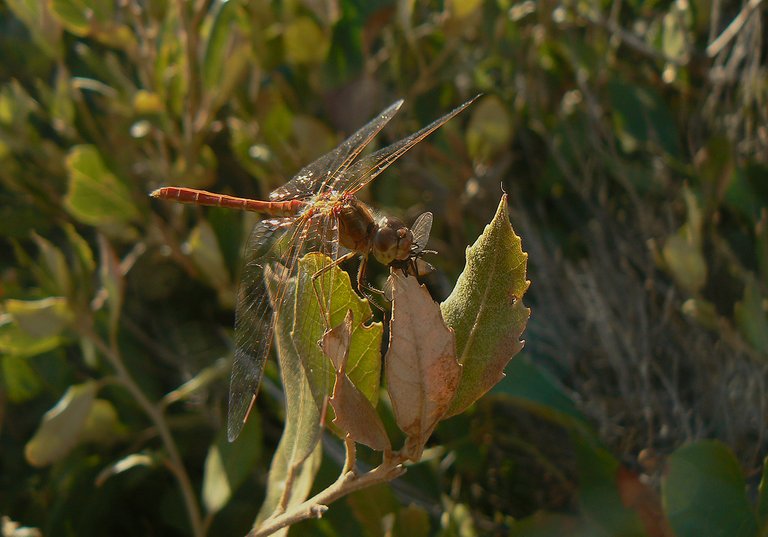
It was an interesting encounter and despite the low quality of the shots due to the same kind of camera quality, I was very satisfied with what I caught on that occasion.
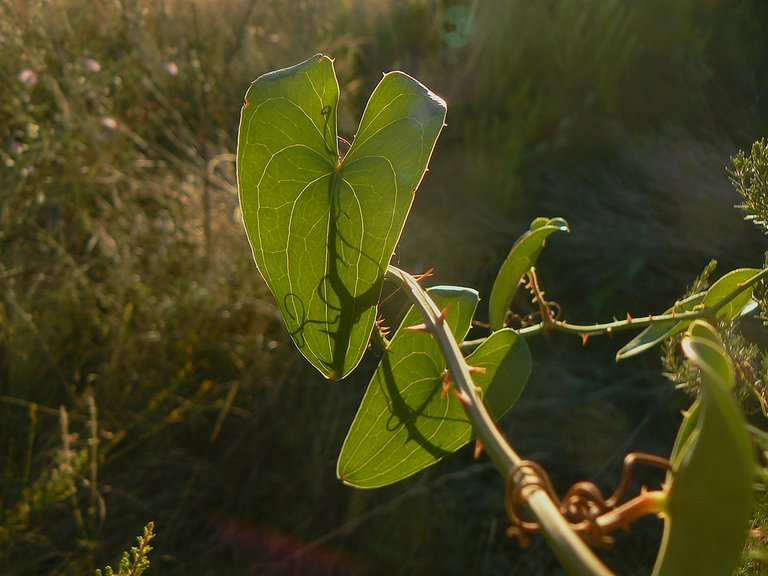
These are the leaves of the Smilax aspera plant. In the following photograph ...

... you can take a better look at the shadow of the stems and thorns projected on one of those leaves.
This Calliptamus italicus grasshopper was photographed on the rocks, closer to the sea.
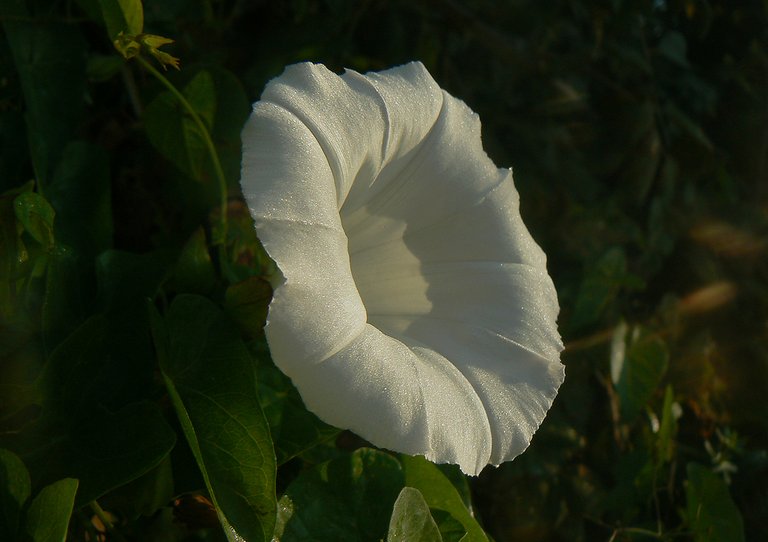
This is the Calystegia silvatica flower.
Calystegia silvatica is a climbing plant that often covers the shrubs along the dusty unpaved roads in this area.
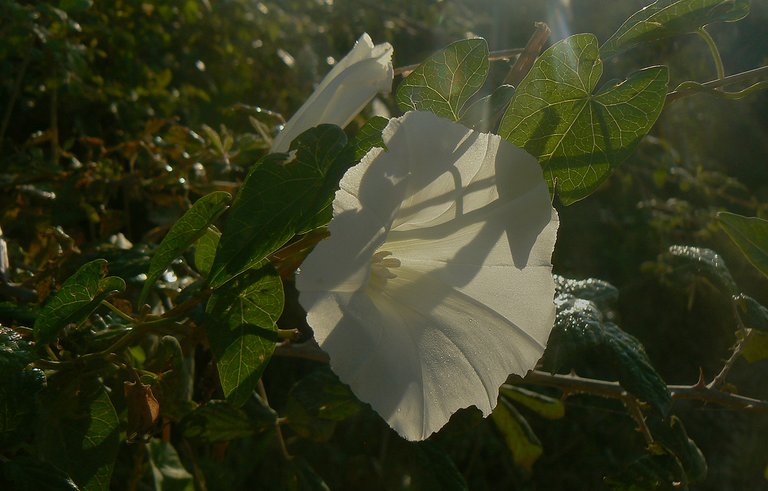
I photographed quite a few of those lovely white flowers on the 13th of August 2016.

Flies were feeding on nectar in the center of the flowers.
These are flies from the Syrphidae family.

Episyrphus balteatus is the name of the species.
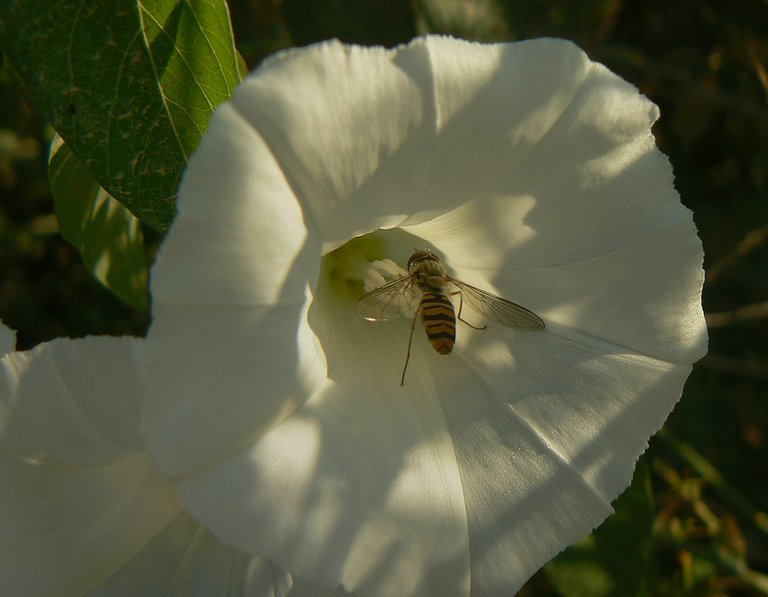
As you can see ...

... I photographed quite a few Episyrphus balteatus flies on the 13th of August 2016.
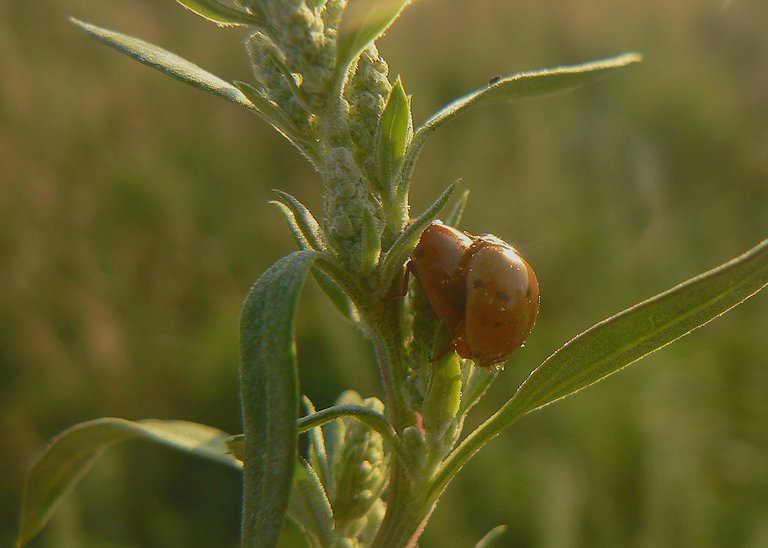
Lasy beetles were mating in the middle of the meadow.
This small snail was photographed on the blackberry shrub. The same can be said about the small moth shown in the following shot.
Yep. You can see the moth in the central part of the photograph. Especially if you enlarge the picture by clicking on it. This is the Plutella xylostella. Commonly known as the diamondback moth. A species from the Plutellidae family.
Here you can see the interesting minuscule caterpillar that somehow fell into the palm of my hand. Probably while I was walking under some trees. The following photograph ...
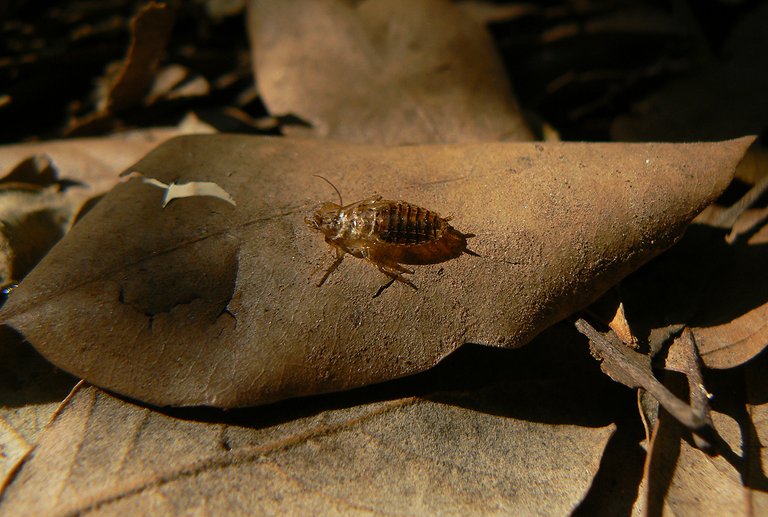
... was definitely taken on the leaf litter under the trees. You can see an empty exoskeleton of the small cockroach here.
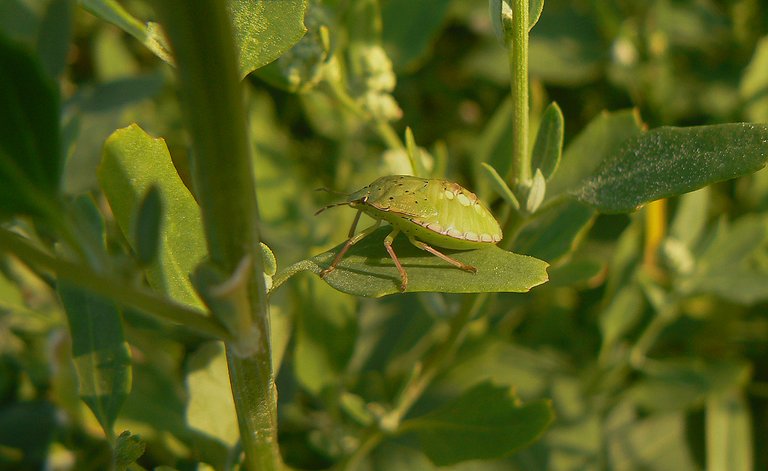
Well camouflaged on the green vegetation, a shield bug nymph is posing in the center of this photograph. Nezara viridula is the name of the species.
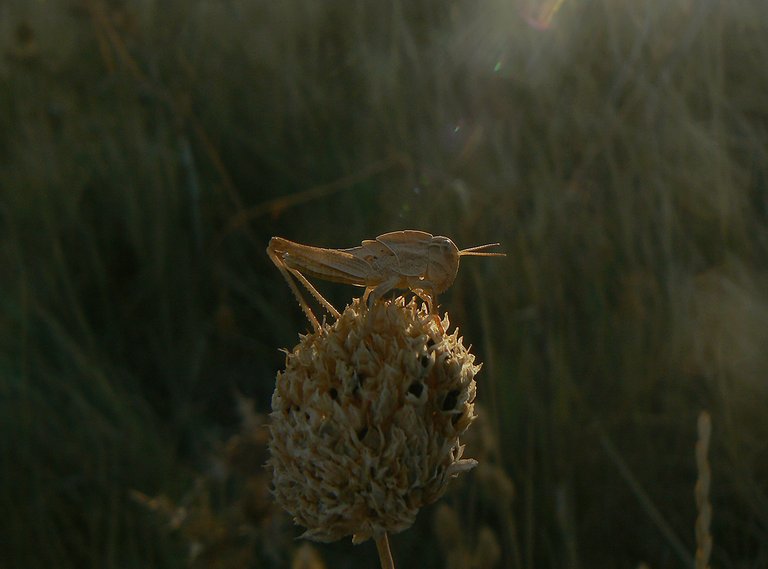
This is a grasshopper nymph. The name of the species is Locusta migratoria.
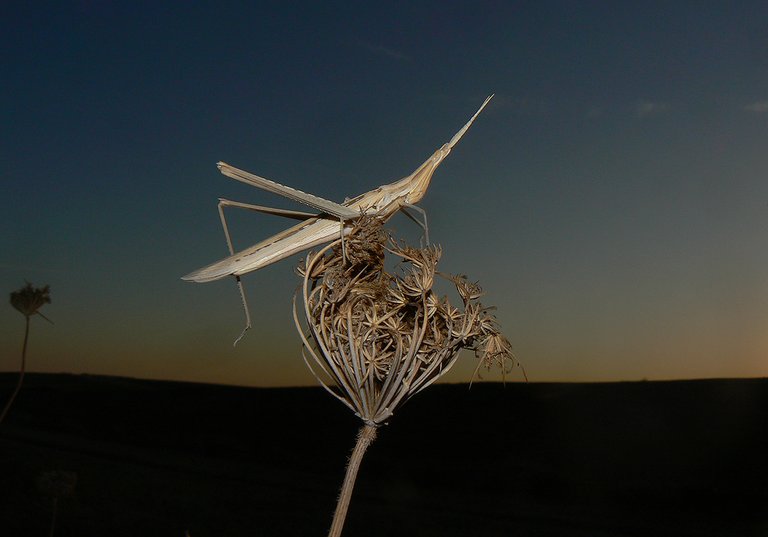
This is the Acrida ungarica grasshopper. An adult Acrida ungarica grasshopper, more precisely.
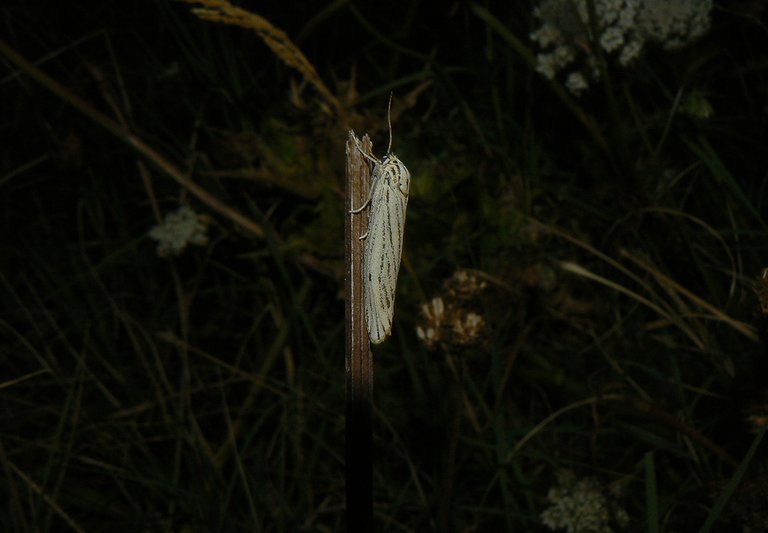
The moth shown in the center of this photograph belongs to the Erebidae family. Spiris striata is the name of the species.
Here you can see the Acrometopa macropoda bushcricket on the palm of my hand.
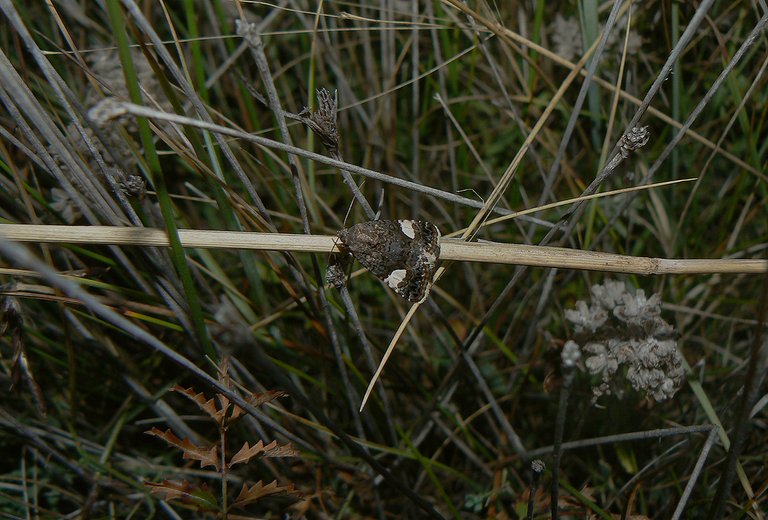
The small moth, well-camouflaged in the center of this photograph, is the Tyta luctuosa, a species from the Noctuidae family.

Here you can see the dry Briza media grass.

This dry detail belongs to the Cistus albidus plant.
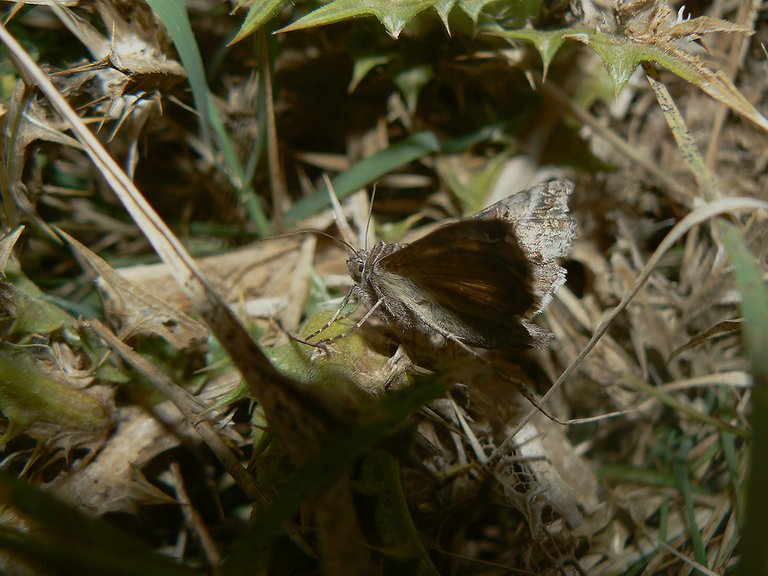
I'm pretty sure that the moth shown in this photograph belongs to the Noctuidae family but I can't tell you the name of the species.
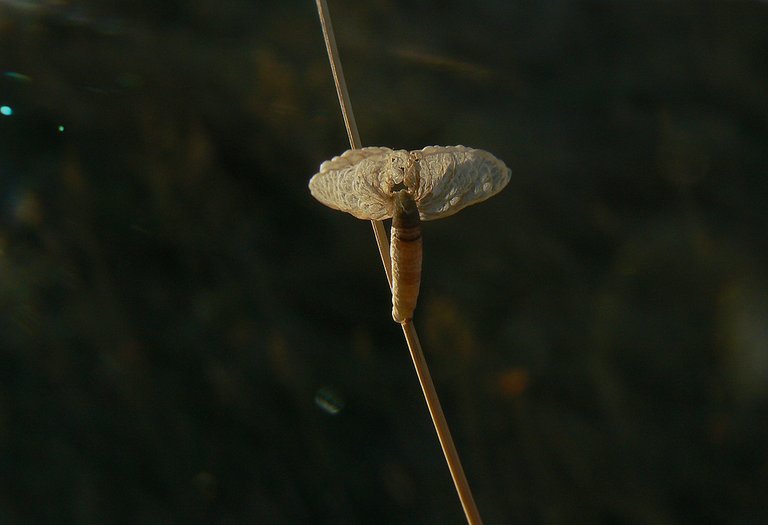
This is the empty pupa of some small moth. That's all I can tell you about the thing shown in the center of this last shot.
The following links will take you to the sites with more information about some of the protagonists of this post. I found some stuff about them there.
https://en.wikipedia.org/wiki/Pontia_edusa
https://en.wikipedia.org/wiki/Chrysoperla_carnea
https://en.wikipedia.org/wiki/European_mantis
https://en.wikipedia.org/wiki/Vagrant_darter
https://en.wikipedia.org/wiki/Smilax_aspera
https://en.wikipedia.org/wiki/Calliptamus_italicus
https://en.wikipedia.org/wiki/Calystegia_silvatica
https://en.wikipedia.org/wiki/Episyrphus_balteatus
https://en.wikipedia.org/wiki/Diamondback_moth
https://en.wikipedia.org/wiki/Nezara_viridula
https://en.wikipedia.org/wiki/Spiris_striata
https://en.wikipedia.org/wiki/Acrometopa_macropoda





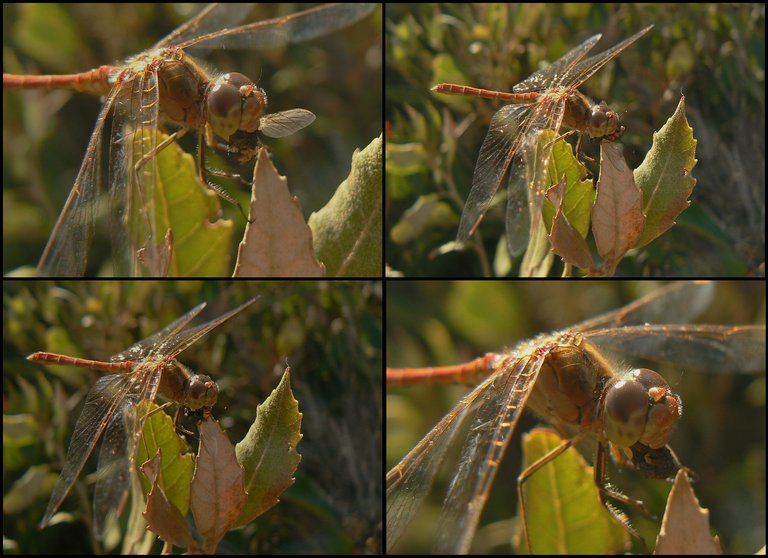
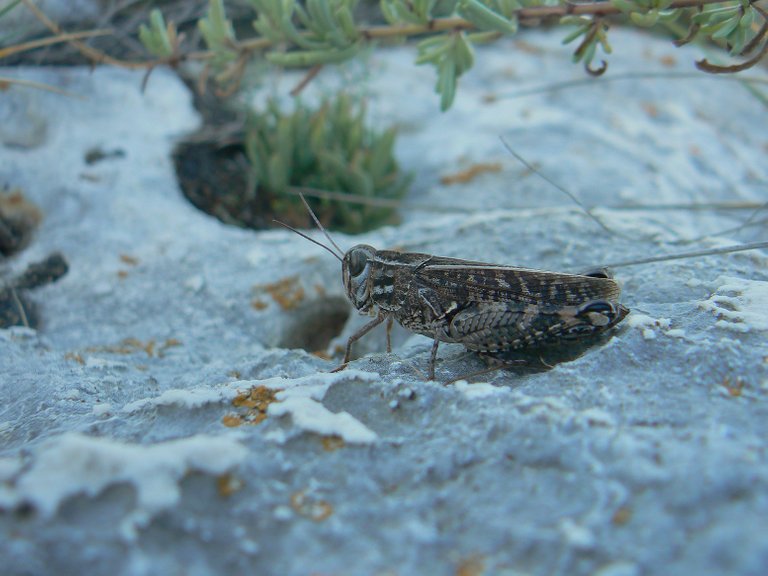
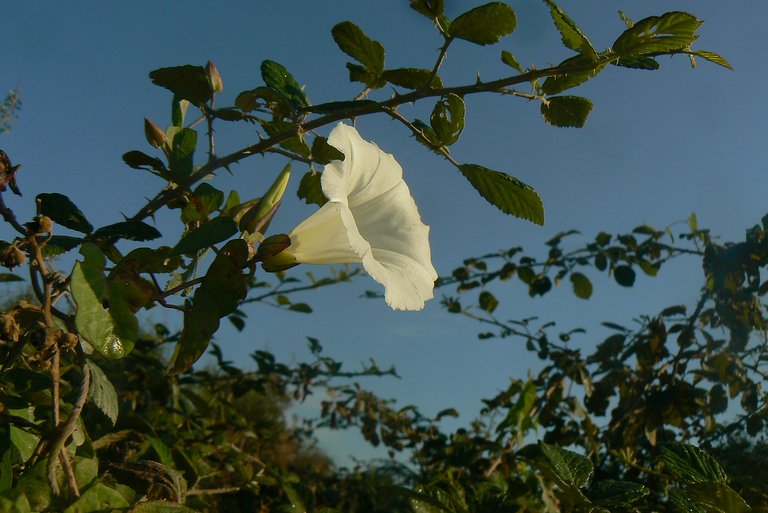


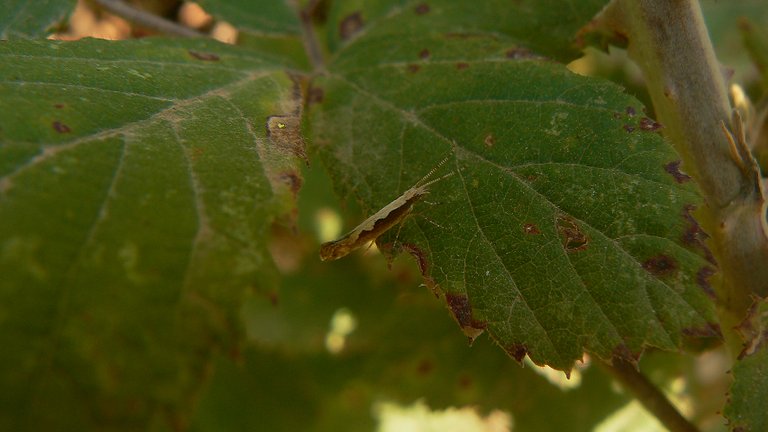
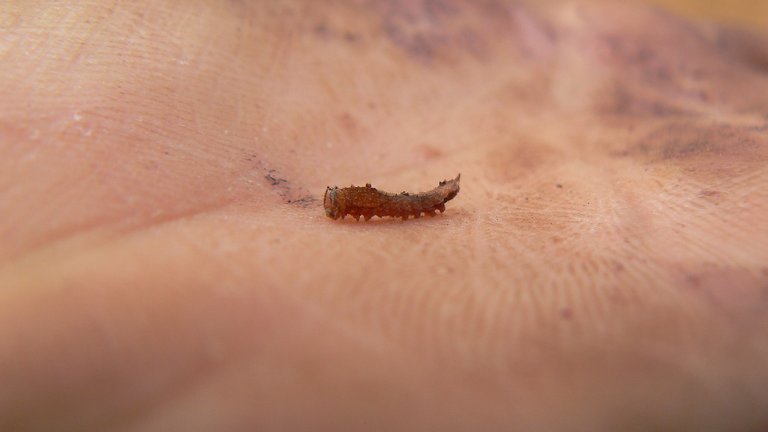

These small creatures are pretty good. We ignored them all as we are human beings and powerful in all natural creatures but these things are so beautifully designed but sometimes I frustrated when these beetles or dragonfly irritates me alot.
very good macro photos, I like this
Are those cotton flowers as dried and look like cotton?
Yes, they look a bit like cotton. But much smaller.
Have you got their name?
No. I don't know what plant is that.
Awesome all these photos, looks so bright and beautiful 😍 😍
here's also weather too hot now these days
Some great shots from there back catalogue, you must have and impressive array of photos in your collection. Where do you store m all?
Great bro!! treat nature and finding the insects
I think these are the most beautiful pictures that you have ever taken
They look very beautiful
Your pictures is amazing
Buen día, amigo la mantis me parece un insecto muy imponente y hermoso en realidad.
El saltamontes Acrida se asemeja en el pico al pez espada.
https://twitter.com/Iskafan1/status/1668206071251451907?s=20
There is too much to explore, we haven't even explored 1% of this universe. Capturing that dragonfly catching a fly was the best shot in all these, I also like the one with the shadow in the plant and also the one in the beetles were mating. thanks for showing this side of this universe.
Congratulations, your post has been upvoted by @dsc-r2cornell, which is the curating account for @R2cornell's Discord Community.
You have lots of beautiful insect photos, they all look so awesome.
Wow - these pics are great. The eggs on the stalks are fantastic - never seen anything like them before. As always I love the mantis picks. I would have though it would have been bigger - for some reason I would have though it was about half the size of your hand !
Loving the shadows on the leaves too !
!LUV
@borjan, @hoosie(4/5) sent you LUV. | tools | discord | community | HiveWiki |
HiveWiki |  NFT | <>< daily
NFT | <>< daily
Yay! 🤗
Your content has been boosted with Ecency Points, by @borjan.
Use Ecency daily to boost your growth on platform!
Support Ecency
Vote for new Proposal
Delegate HP and earn more
You always capture beautiful photos of your subjects.
I always admire the beautiful pictures.
very nice display of the small plants and animals.
Love the ones of the lacewing eggs. Loved the one of the fly in the center of the Calystegia silvatica flower. The one of the bells of the dry Briza media grass is really cool!